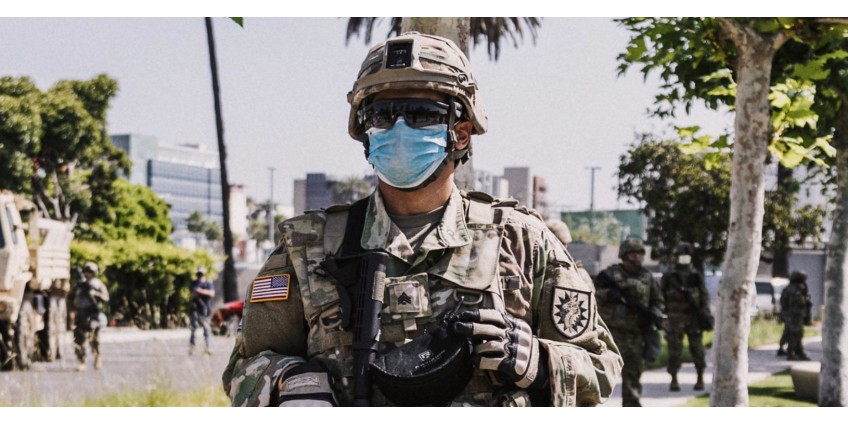
This product is not exportable outside the United States.
By adding this item to cart, you agree and acknowledge the Export Policy and confirm that you are a person in the United States with no intentions to illegally export the device.
This product is not exportable outside the United States.
By adding this item to cart, you agree and acknowledge the Export Policy and confirm that you are a person in the United States with no intentions to illegally export the device.


0

0


If you are interested in this article, you have seen the movie War Dogs. And, if you saw him, you could not ignore the words of one of the main characters, who says that the average cost of equipment for an American soldier is $ 17,500. This moment for people obsessed with weapons, hunting, and weapon optic devices always works as a trigger. Even an ordinary person with nothing to do with the army, guns, and night vision devices will be intrigued by whether this information corresponds to reality. Indeed, you have started looking for confirmation or refutation of this information on the Internet, forums, Reddit and Quora. Indeed, you did not find a reliable and straightforward answer to the question: How much does soldier equipment cost? We, too.
Remembering the rule that we decided to understand this issue, if you want to do something good, do it yourself. But, we are not so interested in testing this myth. We are not too interested in giving an unambiguous answer. Is it true that it costs $ 17,500 to outfit the average US Soldier? We decided to look at the issue more broadly and challenge ourselves. Today, we will disassemble the equipment of a modern American warrior, look at the average prices of equipment from sunglasses to night vision goggles, look back and try to find the answer to how expensive it is to dress and equip a fighter of the best army in the world.
People have been fighting since the first days of their existence. Gradually, they created regular armies, modernized various weapons, and improved soldiers' military equipment and personal gear. The U.S. Army has achieved particular success in this matter. In past and present military conflicts (WWI, WWII, the North Vietnam-South Vietnam war and many others), its soldiers had different equipment adapted to current needs. Almost always, it was close to ideal and helped the American military achieve its goals.
From the very beginning of their existence, people have been waging permanent wars between themselves, tribes, and neighbors. War has always been close to humanity. Many scientists believe that this destructive feature has influenced our evolutionary development.
Wars have taken an increasing place in people's lives. The development of civilization raised the stakes and required innovation to gain an advantage over rivals. So, the army began its transformation. From the primitive tribes, where everyone who could hold a weapon was a warrior, there was a gradual and confident division of responsibilities and the allocation of soldiers to a particular group. That was most evident in Ancient India and Ancient Egypt, where soldiers were separated into a separate caste. In ancient Greece and Sparta, military service was also a privilege until the war was in full swing.
Segregation and the appropriation of certain specific attributes to people who have the right to bear arms and classify themselves as paramilitary formations only emphasized elitism and selectivity, calling for special treatment for such people.
The same approach was practiced in ancient Rome. With the beginning of the formation of Rome as an Empire comes the understanding of all the advantages of regular troops. At the same time, there is a demand for the unification of tactics, the order of command of the army, and the recruitment of fighters. The role and benefits of an organized, managed, and well-equipped combat unit become apparent. Defeats from the Germanic tribes did not become a positive advertisement for the model of the Roman army. Still, their reasons were not in the organization and equipment of the legionnaires.
The development and continuation of this logic were practiced simultaneously in Europe and Asia, constantly evolving until the twentieth century, when it became clear that the army required a clear structure. Soldiers' equipment should be not only definitely beautiful but also practical and functional. This was the beginning of a thoughtful and balanced approach to recruiting a warrior. It was not feathers and multicolored cavalry axel bands that came to the fore, but practical things that helped save one's own life and help eliminate the enemy.
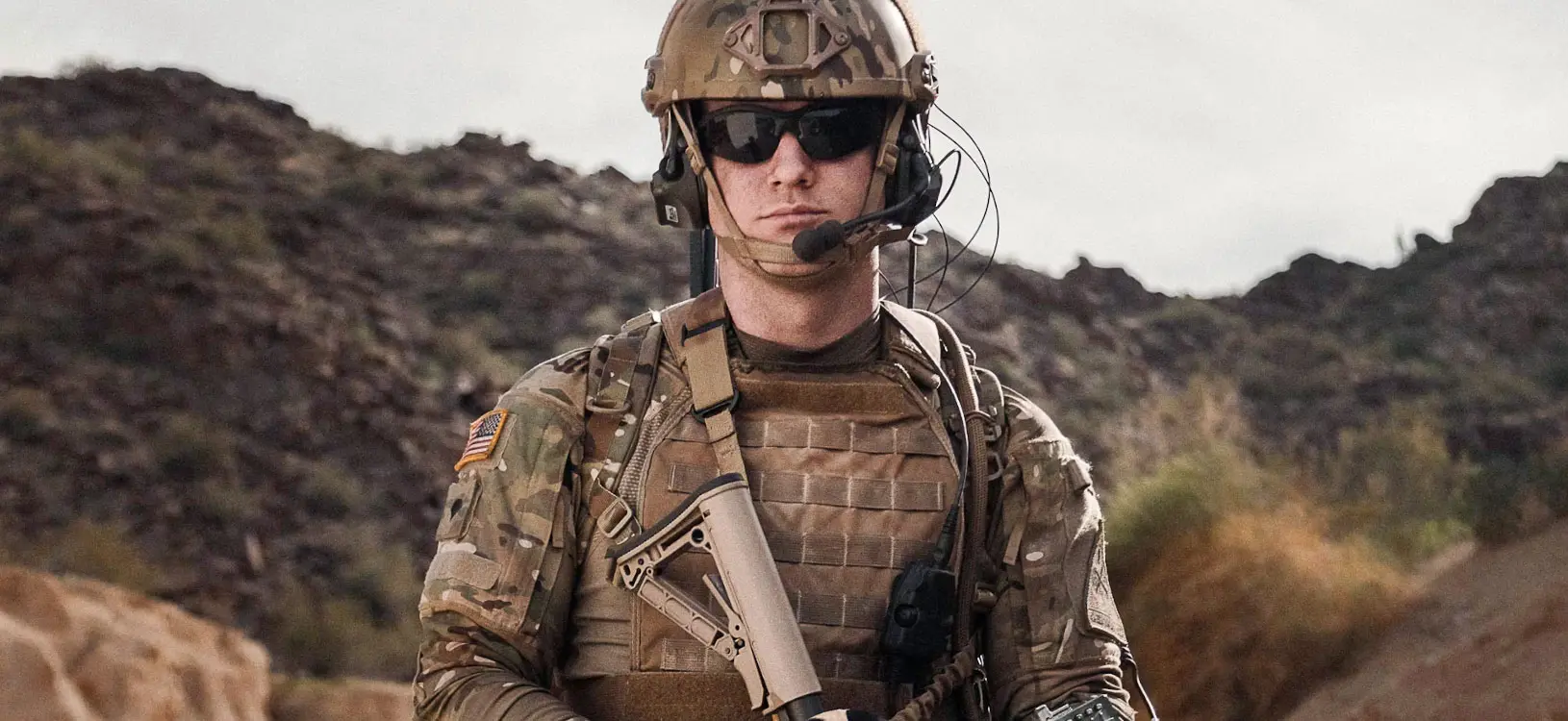
Global things are made up of hundreds or thousands of small details that are not easy to see at a glance. A complex and cumbersome machine like the army is a clear example of this statement, especially if we are talking about the advanced and best military in the world.
Admit it: when you think of the army, the first things that come to mind are aircraft carriers, fighters, bombers, and heavy tanks. These things shape our view of the military as a global phenomenon. Well, of course, people. But, their image is blurred and collective. After all, the US Army is, first and foremost - an important guys and girls who are real heroes of their time. Each of them is worthy of mention and respect. Our scientists know and remember this, so the whole vector of the development of weapons and technology is to develop things that help save the lives and security of our defenders. Everything from sunglasses to combat drones aims to save a soldier's life. We have achieved great success in this. And now, we will prove it.
In the modern history of the United States, several key stages have become turning points and given considerable impetus to the development of military technology. We all know these stages. World War II, the Korean Campaign, the Vietnam War, the Desert Storm, and the attempt to restore order in Afghanistan. We will see exciting things if we discard emotions and look at these conflicts in terms of facts. We will now look at how strong the effect of a simple fighter's equipment was on loss and efficiency.
1846-1848, there was a military conflict between the United States and Mexico. The Americans won all the key battles and achieved their goals. As a result of this war, Mexico lost part of its territory, and the United States, on the other hand, gained the opportunity to form new states.
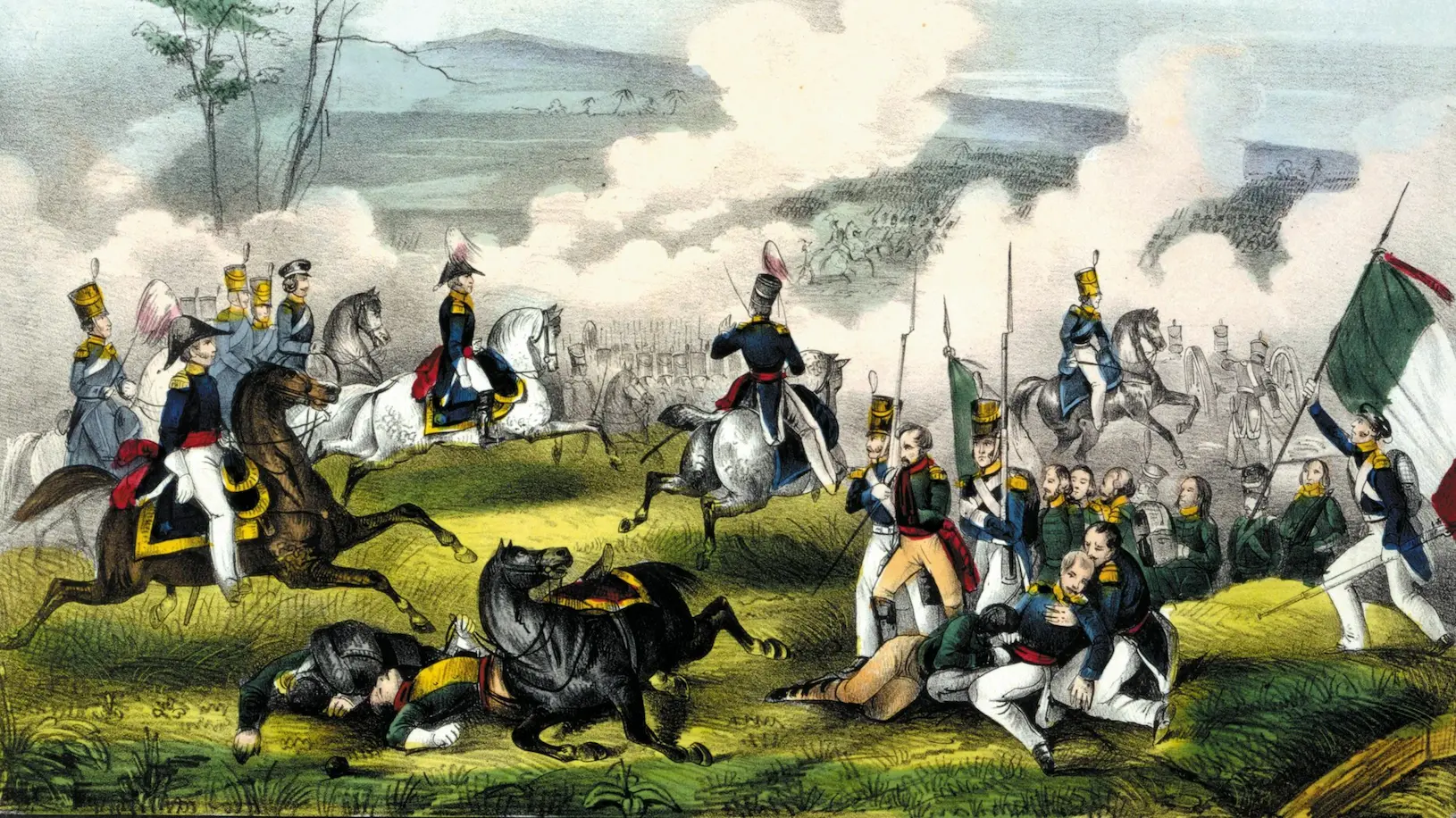
This conflict was marked by the fact that it helped the American army significantly increase the number of soldiers. The original 6,000 were replaced by 115 thousand. In the battles, the United States lost 1.5% of its soldiers killed, and another 12% were wounded to varying degrees of severity.
In the Mexican-American War, the primary weapons were muskets and muzzle-loading rifles. They were not ideal in terms of accuracy, but they made it possible to reload faster. Also, various American units used Colt revolvers, first used in combat in this war.
Army units and individual soldiers who participated in the war wore light blue clothing, while officers wore dark blue. Clothes were made of wool and other natural materials. Various equipment items always had special badges that indicated what branch of the military the soldier belonged to. Volunteers who took part in military confrontations most often tried to dress in the same way as the regular army. They always carried heavy loads, including various everyday items and essentials. Various protective equipment was rarely used due to its high cost and excessive weight.
1861-1865, the Civil War was fought in the United States. It involved troops from the Union and the Confederacy. The former initially had a relatively small force, which was trained to protect the borders from Indian raids and to conduct military operations in various conditions. The Confederacy immediately had a more powerful army, joined by soldiers and officers who served in the seceded states. At the same time, both opposing sides could recruit a vast number of volunteers, so their forces became approximately equal. In total, 2.2 million soldiers fought on the side of the Union, of which 360 thousand died from various causes.
The Union armed forces were equipped much better than their opponents. Its soldiers used mainly Springfield 1861 rifled muskets. They provided the necessary range and accuracy of fire. Another popular option was the Spencer repeating rifle and the Colt Army Model 1860.
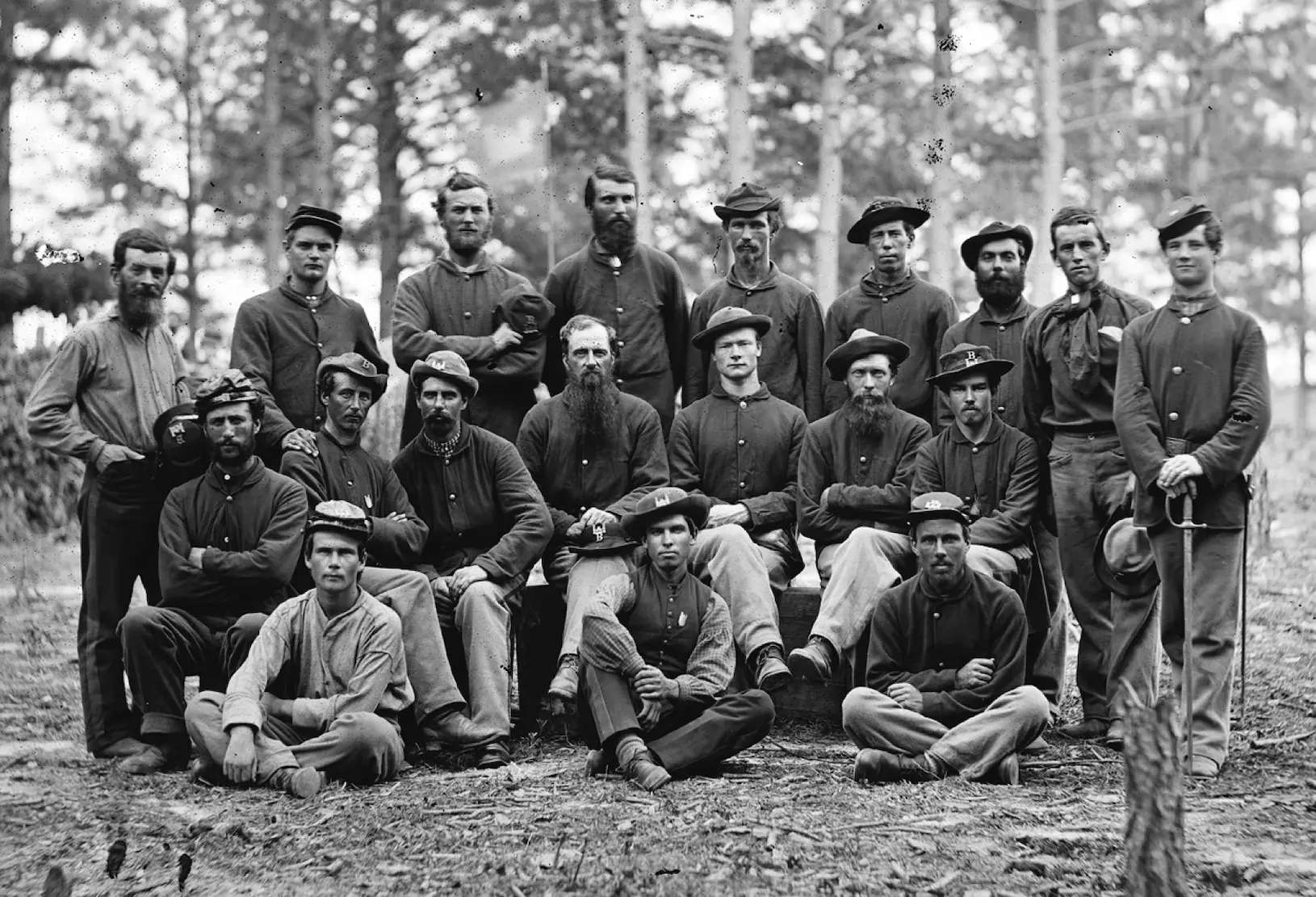
During the Civil War, regular Union Army soldiers and volunteer units used a standard set of army uniforms, including two types of coats, army-style shirts, straight-cut trousers, and other items. The set was complemented by a special black leather waist belt with a special brass plate with the inscription "US." Union Army soldiers always carried less than 50 pounds of additional equipment, which included a change of clothes, a tent, spare ammunition, and various personal items.
In 1898, a military conflict occurred between the United States and Spain. It ended with the victory of the Americans and the annexation of the territories of Cuba, Guam, Puerto Rico, and the Philippines that had previously belonged to Spain. At the time of the Spanish-American War, the United States Army was far from ideal. It was scattered throughout the country and had a relatively small number of personnel. After the hostilities, the Americans began fully equipping their soldiers and training them to use modern weapons. However, due to a lack of equipment, the army was forced to use backpacks, flasks, and other items left over from the Civil War.
Gradually, the American army was replenished with volunteers, so the uniforms and equipment of various units became non-identical. There were also differences in weapons. Some units continued to use outdated single-shot rifles, while others switched to more modern multi-shot ones. The latter were distinguished by a higher rate of fire and the ability to hit targets from a long distance. Among the most sought-after weapons of the Spanish-American War are the Krag-Jorgenson Carbine Model 1896 and the Colt Peacemaker and Colt M1911 pistols.
From 1914 to 1918, the world was engulfed in World War I, which was the bloodiest battle in human history. The US Army entered the war in 1917 on the Western Front and 1918 on the Italian Front. During this time, more than 4 million American soldiers took part in the battles, of which almost 120 thousand were killed.
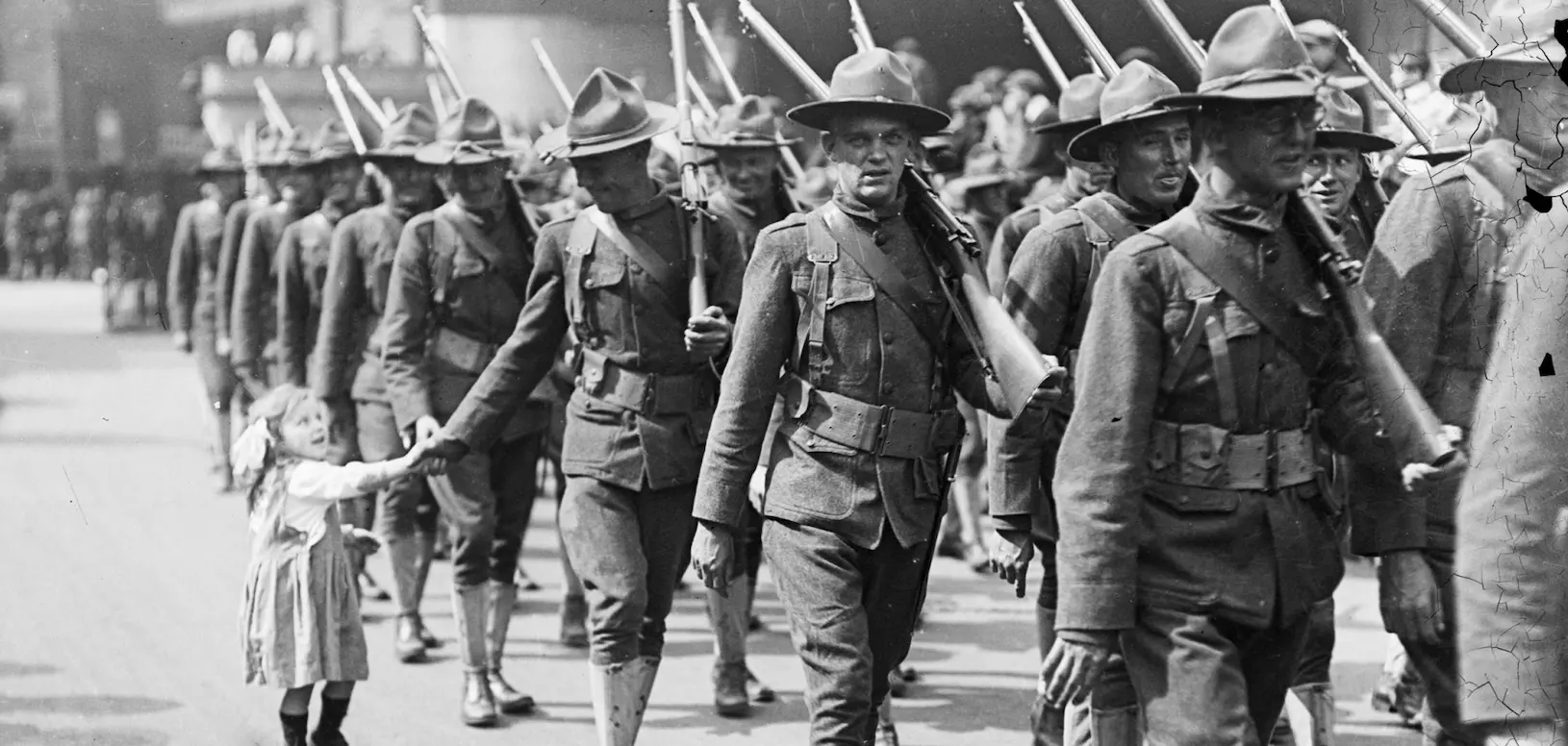
The equipment of US Army soldiers has changed dramatically since the previous military conflict. In the early 20th century, American soldiers began to dress in olive-green wool winter uniforms and khaki-colored summer cotton clothes. The set of clothes included a jacket, trousers, a shirt, a French and British-style hat, and special boots made of genuine leather. The latter were distinguished by a steel plate on the heel, which reduced wear and notable spikes to improve traction with the ground.
The protective equipment of American soldiers has also changed significantly. It began to use a close copy of the British "Brodie" helmet. It was made of special steel, which had increased strength and could reflect large fragments. Also, all soldiers were given gas masks in case the enemy used chemical weapons, which appeared shortly before the start of hostilities. The U.S. Army used the Model 1903 Springfield bolt-action rifle as the primary weapon.
Let us begin with the most significant conflict in human history and the first war, in which our country participated in large-scale and comprehensive participation. In addition to the important industrial, scientific, and economic involvement, our soldiers who liberated Europe from the Nazis took part in the battles. And they were equipped… not bad. The cost of equipping a soldier of the ground forces during the war was 170 dollars, corresponding to approximately 2,500,000 dollars. For this money, the soldier received a steel helmet with liner, boots, and spats, a combat belt with equipment, and a standard M1 rifle. The combat equipment weighed 35.8 pounds.
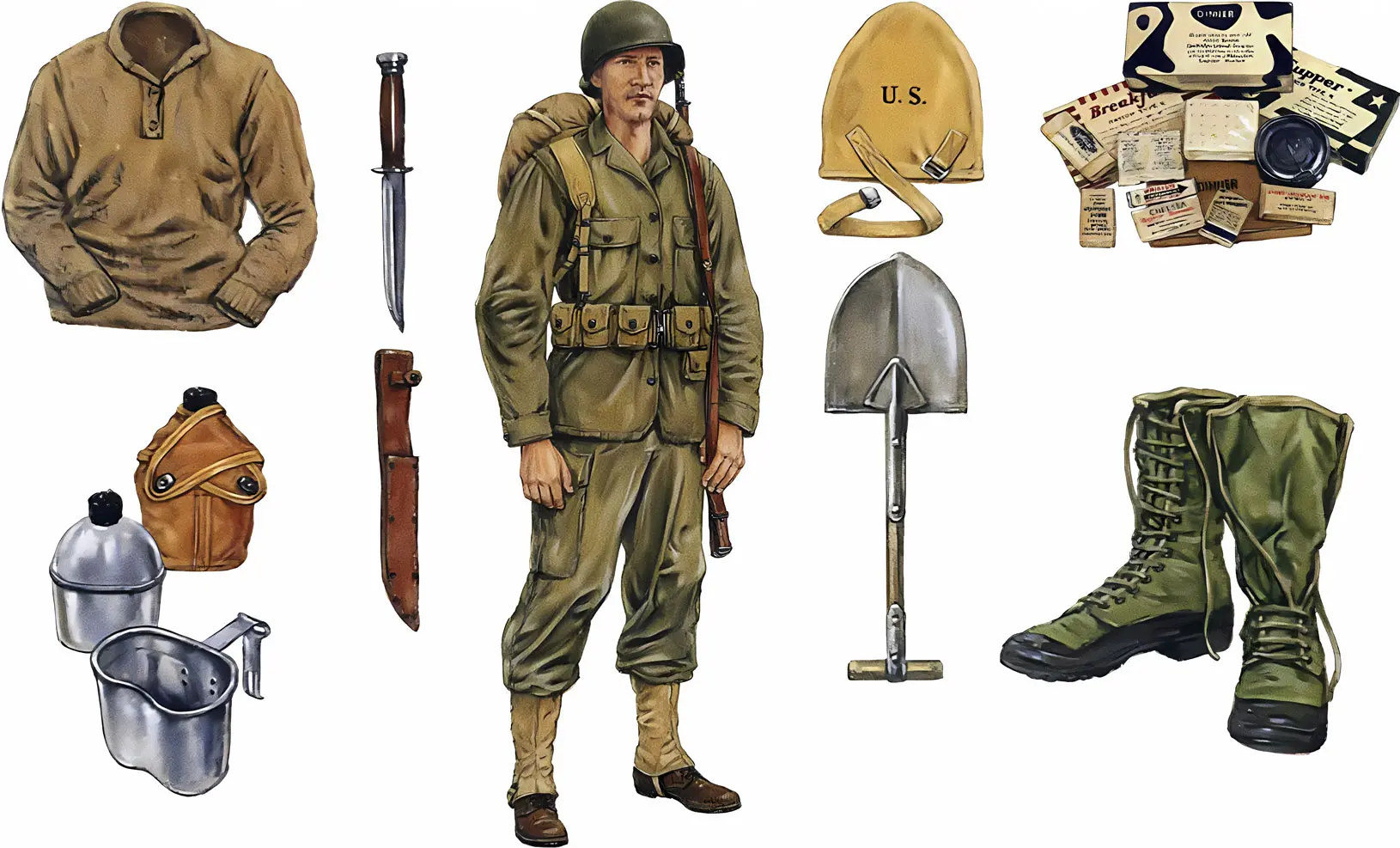
We can safely say that our troops were armed and dressed very well. The differences were huge compared to the background of Soviet soldiers, who were equipped and armed very poorly. History knows cases when the communists could not arm the soldiers with weapons, so they handed out sticks and called for a gun in battle. In addition, thanks to the lease, the USSR even made buttons, often from material provided by the United States. By the way, we will remind you that neither the Soviet Union nor its successor "superpower," Russia, paid in full.
But, on the other hand, the ratio of killed to wounded in that bloody meat grinder was incredibly high - 41 percent. This means that there were 2.4 wounded per 1 killed. Given that 11.3 million of our guys fought, these numbers are simply appalling.
In 1950-1953, the American army participated in the Korean conflict. It divided Korea into two independent states and divided the spheres of influence of the USSR and the USA. From the first days of the war, the American Air Force and Navy were present on the territory of Korea. However, they did not carry out any military missions. They only evacuated citizens of the USA and South Korea and helped them escape the war. After the capture of Seoul, American ground forces helped restore the borders recognized by the UN and defended South Korea from the USSR and North Korea. In total, about 140 thousand American soldiers died during the conflict.
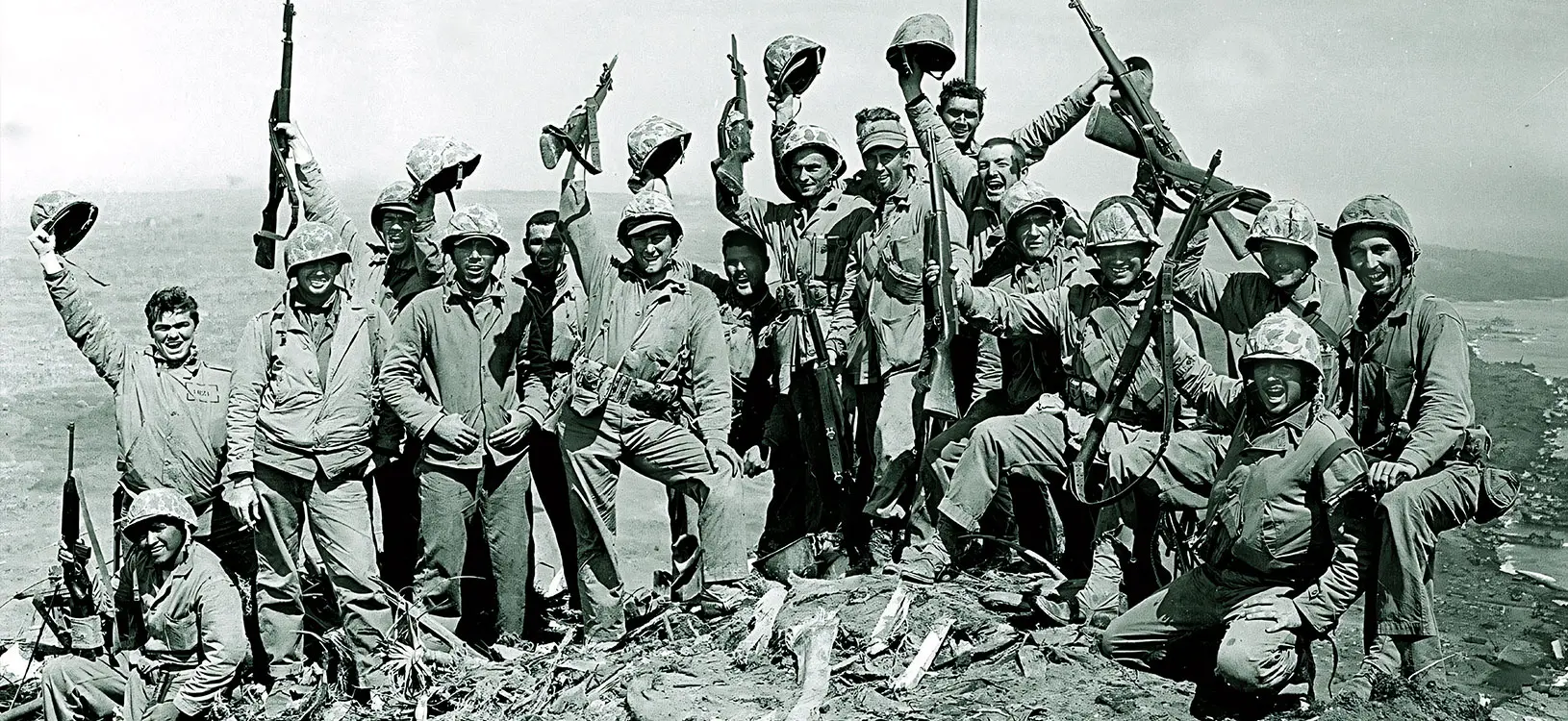
American soldiers' equipment consisted mainly of samples left over from WWII. Over time, it was supplemented with winter clothing and more modern means of protection. Among the latter, the M1952A model bulletproof vest stood out. It became an improved version of the bulletproof vest that the Marines used before the war. This protective equipment weighed 8.5 pounds and had a 12-layer structure. The M1 Garand rifle became the primary weapon of American soldiers. The M2 carbine was also actively used.
The United States would not be the country we love and are proud of if it did not know how to draw conclusions from its mistakes and play ahead. We will miss the conflict in Korea and immediately move on to the heaviest campaign in Vietnam, which has become a point of no return for many industries in the country. But, first of all, it was the quintessential revolution in the army and the paradigm of external security. This period is also characterized by the fact that completing the soldier's equipment has changed significantly. The result was a reduction in the ratio of killed to wounded to 32 percent (one killed per 3.12 wounded). 2.3 million American guys have gone through hell in the jungle, and frankly, such loss figures are appalling.
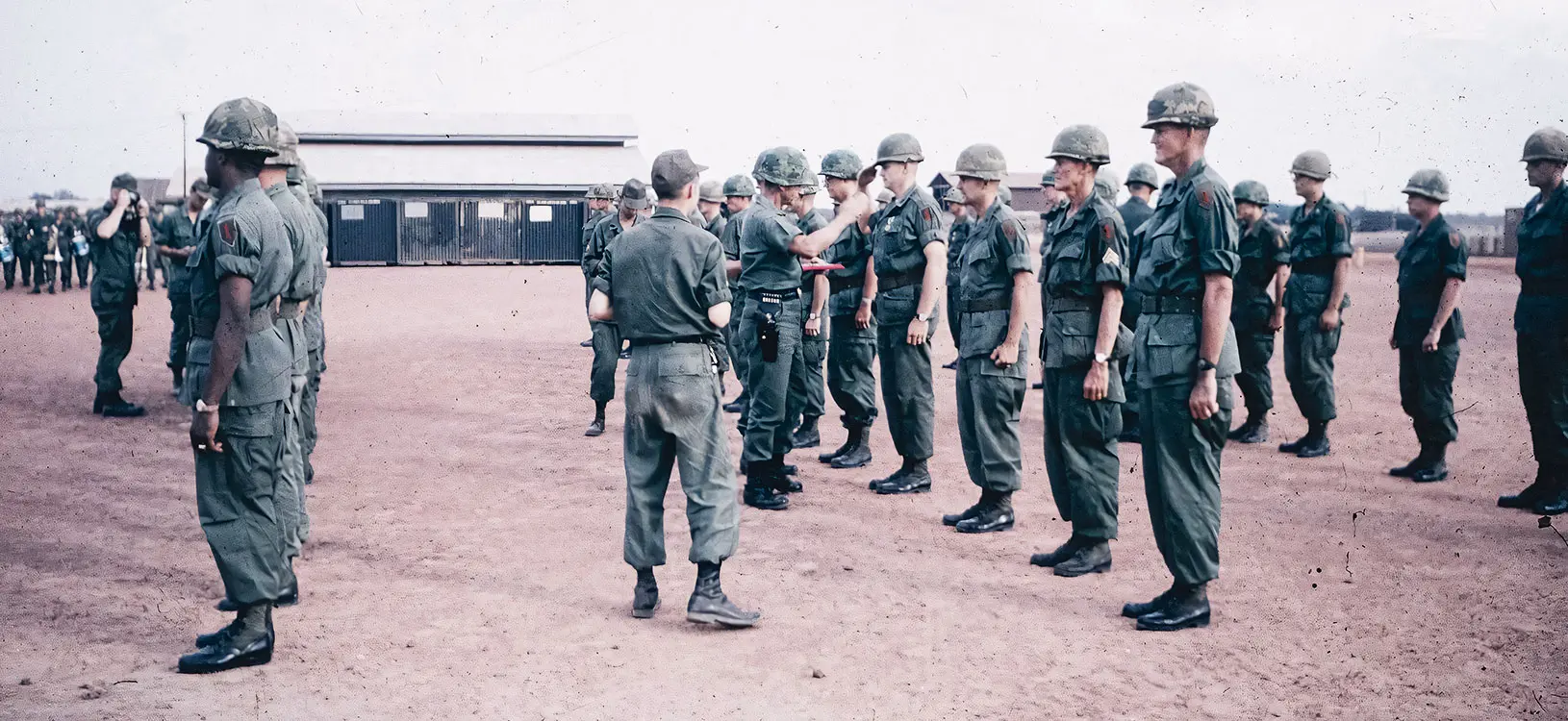
Conclusions were made. The army has changed a lot. New technologies and advanced developments began to be introduced. In that war, they began to use night vision devices actively. The equipment was also improved, but it became more expensive. Dressing a soldier costs an average of 1,112 dollars, equivalent to 8,230 current dollars. The fighter also had a steel helmet with liner, load-carrying equipment, combat boots, and a flak vest. The last addition significantly improved, but heavy and restraining armor was often neglected in humid and stuffy climates. However, the total weight of the equipment was less - 35.1 pounds. The armed fighters were M16A1.
Campaigns in Iraq and Afghanistan have shown how much modern scientific advances and innovations are integrated into the military sphere. A completely new outfit was created, providing maximum protection and relative comfort. In general, there was a reason to say that the United States started ideal equipment for the ground forces, and, in the future, partners and enemies would be equal to our achievements. In addition, the look of the American fighter has become a classic, firmly embedded in pop culture.
Ergonomics, beauty, and practicality are useless if they cannot save and protect lives. In terms of statistics, the new type of equipment coped well with these tasks. For 766,000 military personnel, the ratio of killed to wounded was 12 percent, one killed for 8.3 wounded. This is still a lot, too much, because, for our country, the loss of even one soldier is irreparable. But compared to the staggering 41 percent in World War II, those numbers don't look so dire.
What was the key to this result? First of all - Kevlar materials began to be used for helmets and body armor. Personal protection elements have become lighter and more reliable. In addition, body armor has evolved into systems that protect exposed body areas with removable armor pads. Attention to detail has become a hallmark of equipment designers. For example, attention was paid to the elbows and knees, for which special pads were created. The eyes are also now protected by special glasses, which differ for different situations. Like the fingers, thanks to fire-retardant gloves. And the legs are relatively comfortable thanks to the lightweight and durable tan combat boots.
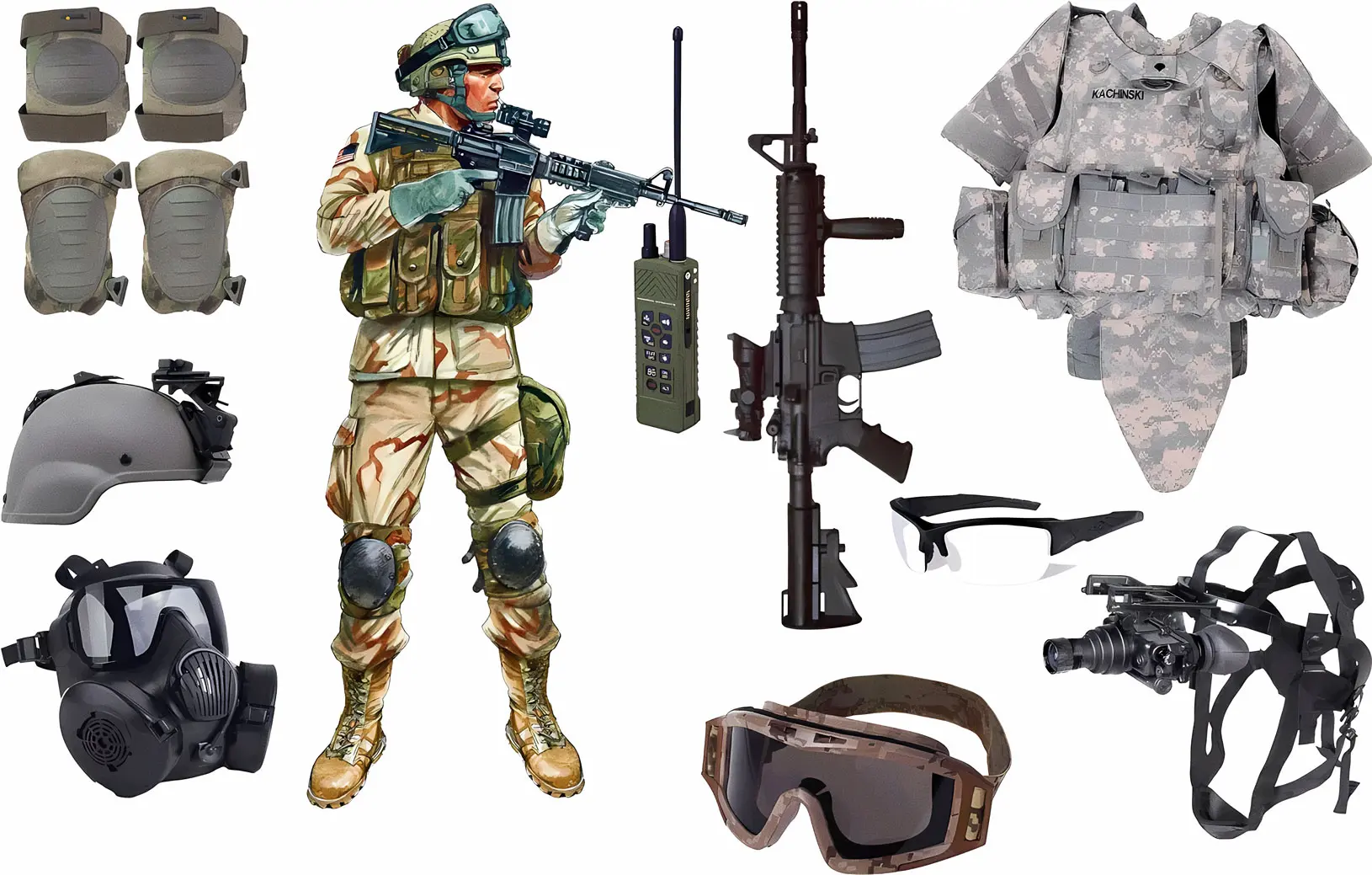
The soldiers' equipment with night-vision goggles and thermal vision goggles was a significant breakthrough. These compact devices have become indispensable pieces of equipment for fighters. Thanks to the secure clip-on system, they are attached to a lightweight Kevlar helmet, allowing one movement to put the NVD device into working condition. Thanks to advanced optics by the best night vision US manufacturers, our military proudly proclaims, “We owe the night.”
It is true. The darkness of the night does not become an obstacle because the warriors have NV goggles, night vision binoculars, and NV monoculars. And if the night is moonless or a blizzard interferes with the device, various types of thermal vision devices will not leave the soldiers blind.
Technology is everywhere. Even the standard M4 modular carbine has a wide range of close combat optics: a red-dot rifle scope, adjustable buttstock, grip, collimator sight, gun mount kits, and the same night-vision rifle scope and thermal scope. All this allows you to assemble a weapon set for each soldier for any battle.
True, the weight of all equipment inevitably increased; now, it is 75.3 pounds, which is understandable. Besides, everything has a price, and the cost of a soldier's safety and comfort is ... Yes, just under $17,500, as the protagonist of the War Dogs said. Therefore, we can consider this myth confirmed.
The Gulf War lasted from 1990 to 1991. It was a confrontation between Iraq and a coalition of 42 countries, in which the United States played the leading role. This modern warfare ended with the victory of good over evil, resulting in part of the Kuwaiti territory captured by Iraq being returned to its rightful owner.
The Gulf War became a real test for the soldiers of the military forces of different countries and their equipment. American soldiers used the standard DBDU uniform in Iraq, which was modified by the latest technological advances. It included traditional elements of clothing with Woodland camouflage and modern footwear (made of leather and nylon).
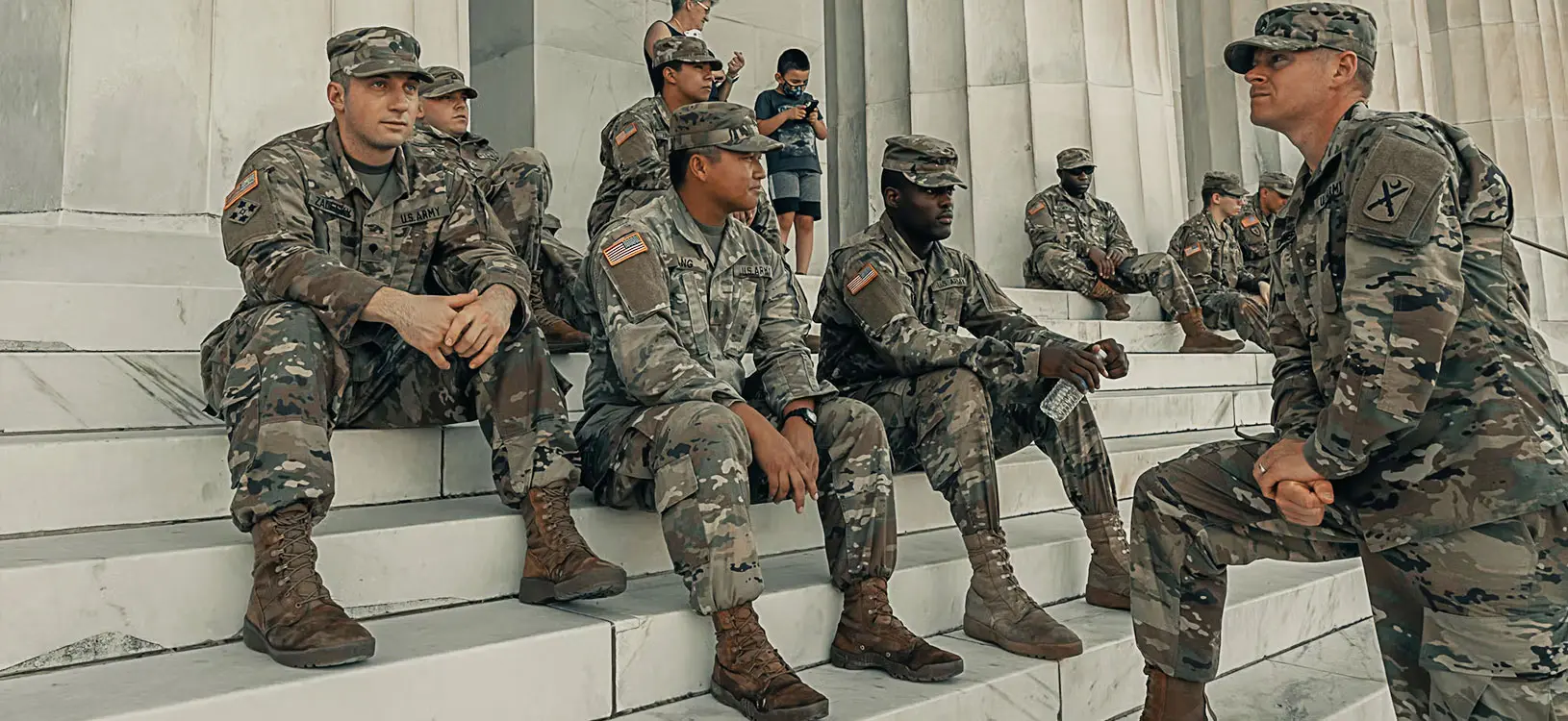
The protective equipment consisted of a bulletproof vest, which effectively absorbed the force of impact, withstood shrapnel hits, and a special helmet. The latter was made of fiberglass and was so durable that it could even protect soldiers from bullets. Also, for safety, US Army soldiers always had an M17A2 gas mask with them.
During the Gulf War, the primary weapon used by US Army soldiers was the M16A2 rifle. It featured a heavy barrel that could fire 5.56 mm bullets and a 30-round magazine.
From 2001 to 2021, Afghanistan was engulfed in war. It began after the September 11 attacks. The United States and its allies challenged the terrorists and invaded Afghanistan. The goal of this operation was to overthrow the Taliban regime and capture key Al-Qaeda members. The international coalition troops managed to achieve local goals by using infantry and Air Force. As a result of the operation, a decision was made to make a deal with the Taliban. According to it, the United States and its allies gradually withdraw troops from Afghanistan, and the Taliban guarantee that neither Al-Qaeda nor any other terrorist organization will operate in the regions of the country subordinate to them. According to official data, about 150 thousand coalition soldiers died during the war. Among them were female soldiers deployed by military units in some countries.
The soldiers' equipment during the War in Afghanistan changed throughout the entire period of hostilities. If, in the end, it was not much different from the one used in the Gulf War, then the differences were significant at the beginning. First of all, it should be remembered that soldiers wore the DCU uniform in Afghanistan. Unlike the more modern DBDU, it was painted in three-color Woodland camouflage, not six colors. There were also differences in footwear. Here, it was desert-colored and made of nylon with small leather inserts. The primary weapon in the War in Afghanistan was the M4 rifle. Later, it was replaced by the more effective M16.
It is not a weapon that shoots. A man shoots. And it is not the numbers on paper and not the chips on the map that are fighting. People are at war and risk. The state has a responsibility to invest in making soldiers more efficient and safer on the battlefield. Therefore, it is worth looking with apprehension at people who are outraged that the budget for the army is too large. We pay so that our soldiers have a better chance of survival. And, if 18 grants can save American citizens - it's not a problem.
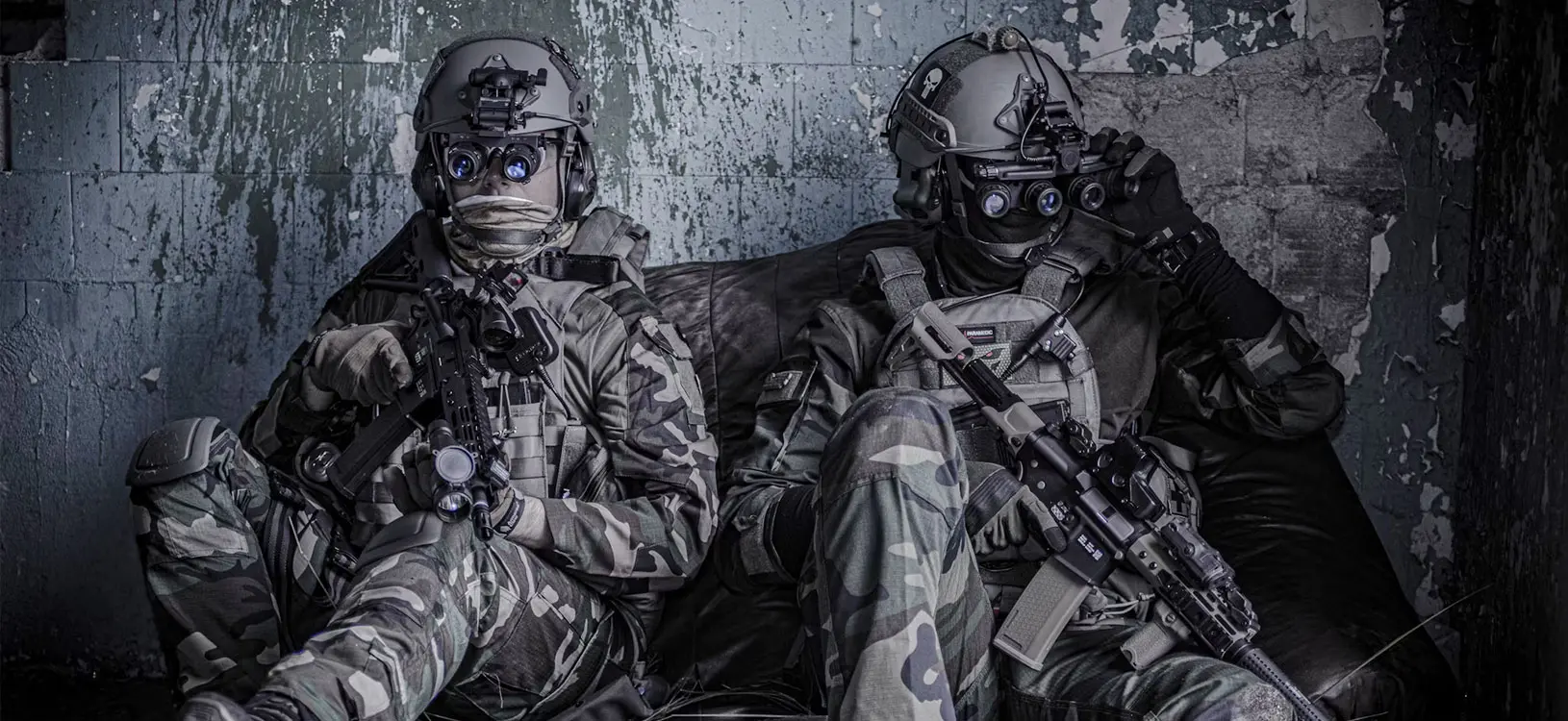
But let's be honest: this amount is approximate and changes every year or fiscal quarter. Moreover, we take into account the equipment without detailing it. Furthermore, we are not trying to estimate specific equipment for special forces or other types of troops, only a rough estimate for the ground forces. And we are not trying to put price tags on unique means of chemical protection or equipment for particular conditions. But let's dig a little deeper and try to compile a list of things a rookie needs.
So, let's briefly list what was awarded to an infantryman when he entered service during the Iraqi campaign in the 1990s of the last century: two sets of uniforms for summer and winter, two pairs of boots, one Kevlar helmet, one load-carrying equipment system, and one flak vest. It is important to note here that modern body armor is very different from that of that time. It often lacked adequate bullet protection, such as the failed Interceptor.
In addition, the soldiers had four pairs of green socks, brown underwear, four brown T-shirts, a Gortex outer shell, a long-sleeve undershirt, and a bottom. Also at the fighter's disposal was a rucksack, e-tool, sleeping bag, polypod, and leather gloves with wool inserts. Also, for low temperatures, there was a "Bear Suit" kit and NBC gear. And the compass! Don't forget about the compass!
In addition, the military had the concept of "Mission Essential" gear, which included specific items. Night vision goggles and NV scopes for weapons, ammo, smoke and frag grenades, weather clothes, and weapons.
As you can see, the equipment of the American soldier today represents reliable and high-quality support for the soldier. The path that the army has traveled over the past eighty years is impressive, and the number of lives saved is in the hundreds of thousands. But, as you understand, our scientists and army have no limit; therefore, it is difficult to imagine what awaits us in the future. But we will try to make a small prediction about what the equipment of an American soldier will be soon.
First, it will be expensive. According to experts, the equipment will cost at least $30 thousand, and the solutions used in its manufacture will increase the price up to $60 thousand. The state is ready to finance such research and development. Moreover, the budget will be prepared to allocate money for equipping the army with such equipment.
The reason is straightforward: times change, and they change wars. Today, we are on the verge of a revolution similar to the one during the Great War. Today, only the most backward armies can afford to send people into battle. In most cases, combat is fought remotely. The legendary struggle of Hisham, Syria, in 2018 will be a vivid illustration. During this battle, the attacking Syrian terrorists and several more than three hundred Russian mercenaries were destroyed. Tellingly, several helicopters and drones repulsed this sneaky and unexpected attack. A separate joy is that neither infantrymen nor ground troops had to risk it.
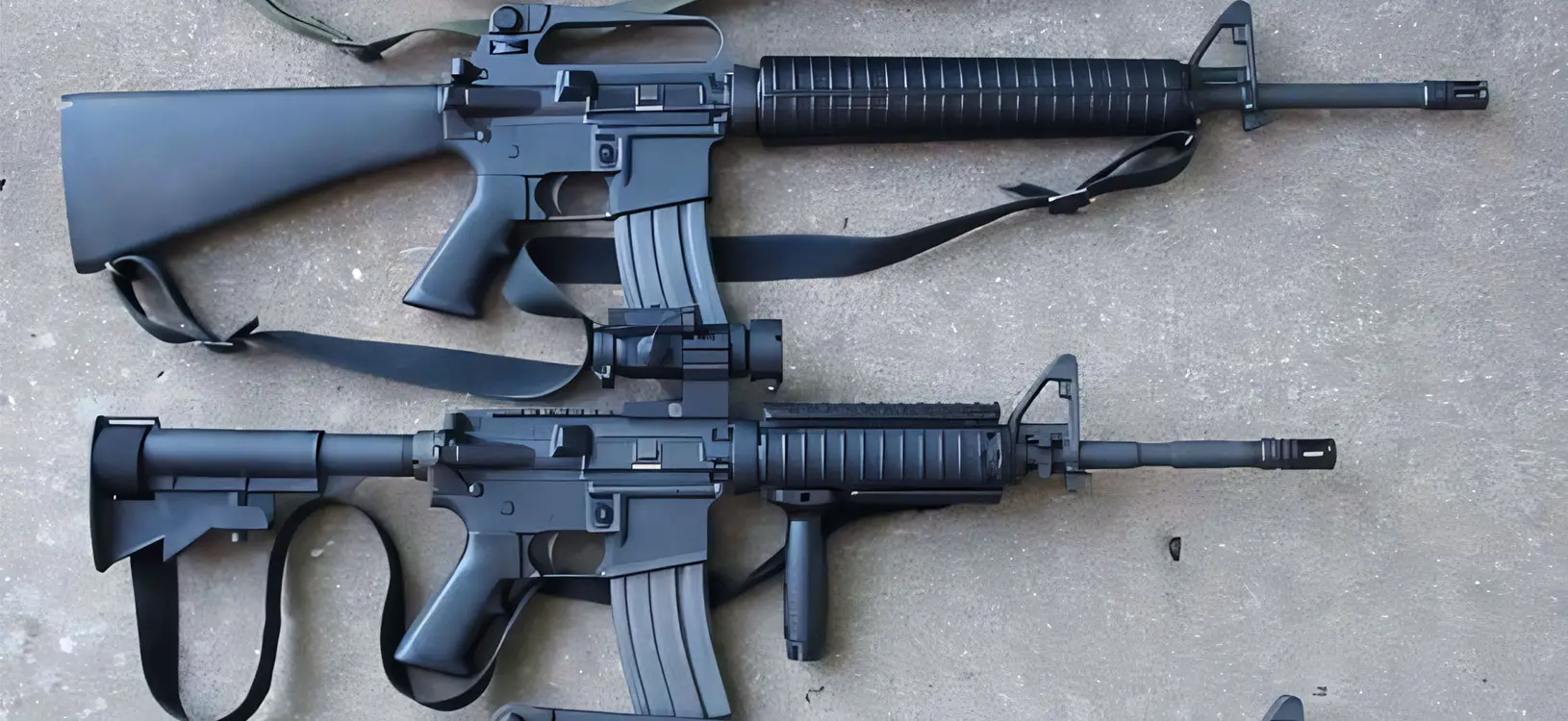
The point is that, thanks to modern technology, cases where a person must participate in a battle are becoming rare. This means you can invest more money in the equipment of the infantrymen.
This means it will be possible to build knee and elbow pads into the clothes and shape an individual. Lightweight helmets with lots of electronics and tactical projection on an armored screen, sensors, batteries, and miniature equipment that fits into a backpack. Air conditioning of clothes, finally! And, of course, the armor can be lightened by using new composite materials while increasing protection.
A soldier in the American army always carries a helmet, armor, uniform, boots, weapons, ammunition, and essential items (food, canteen, compass, first aid kit, etc.).
During WWII, American soldiers carried weapons, ammunition, helmets, seasonal clothing, and essential supplies (spare clothing, food, water, a first aid kit, etc.).
A soldier's kit includes camouflage clothing, footwear, communications equipment, weapons and ammunition, a survival kit, and a first aid kit.
The US military does not currently use the AK-47, but some soldiers are trained to fire it.
Modified: Oct 03, 2024 | 02:06 pm
Table of contents
Featured Articles
How to choose a thermal rifle scope? The principle of operation of a thermal imaging sight and options for its use. Description of the best models of ..
A little bit of history here; Historical facts about who invented the thermal imaging instrument, when and for what reason...
Most people have seen night vision technology in movies but don't know how it work’s. In this article, we are going to tell you who, where and why nig..
Night Vision technology has developed significantly since first introduced 75 yrs ago, the article below highlights some of these breakthroughs as wel..